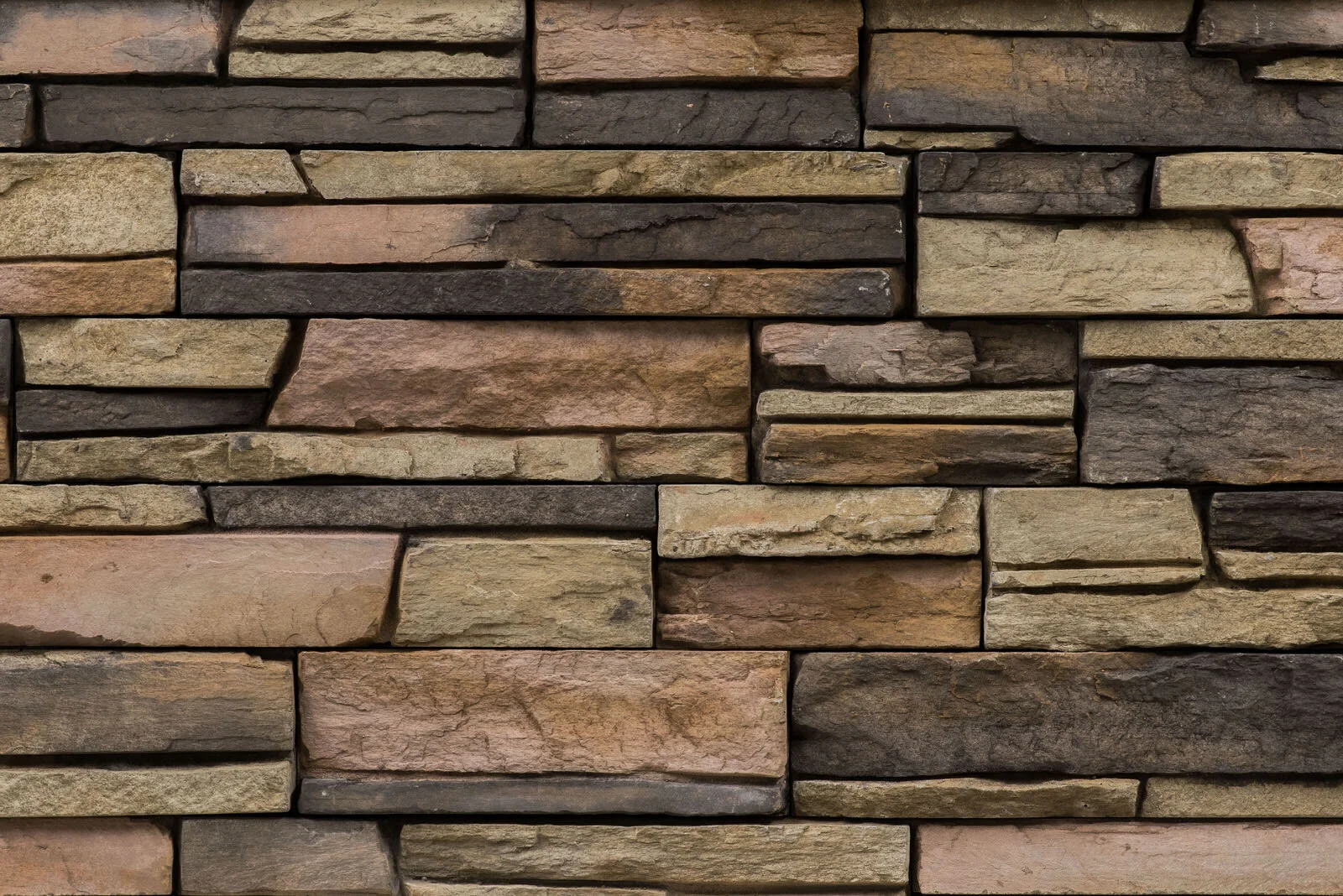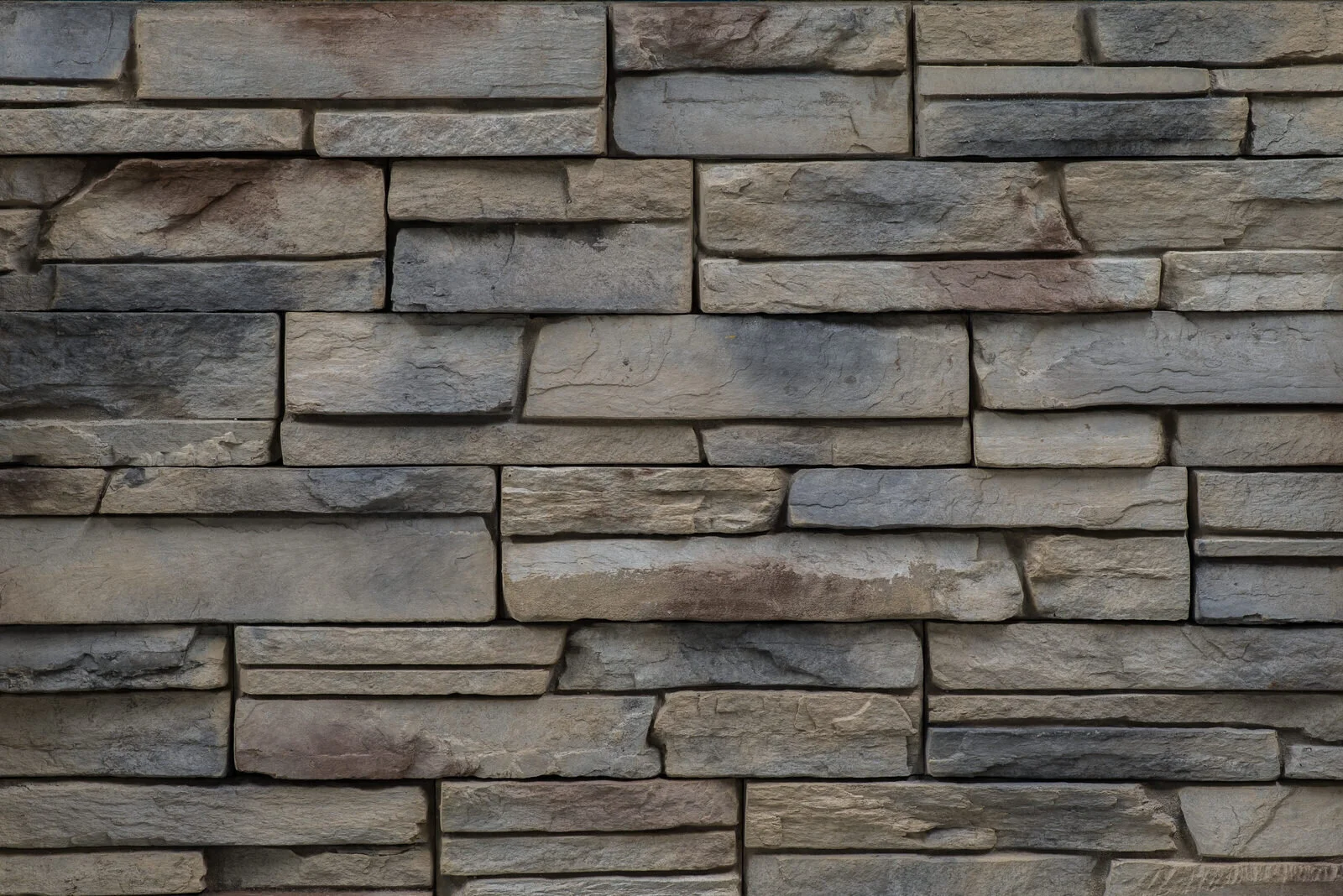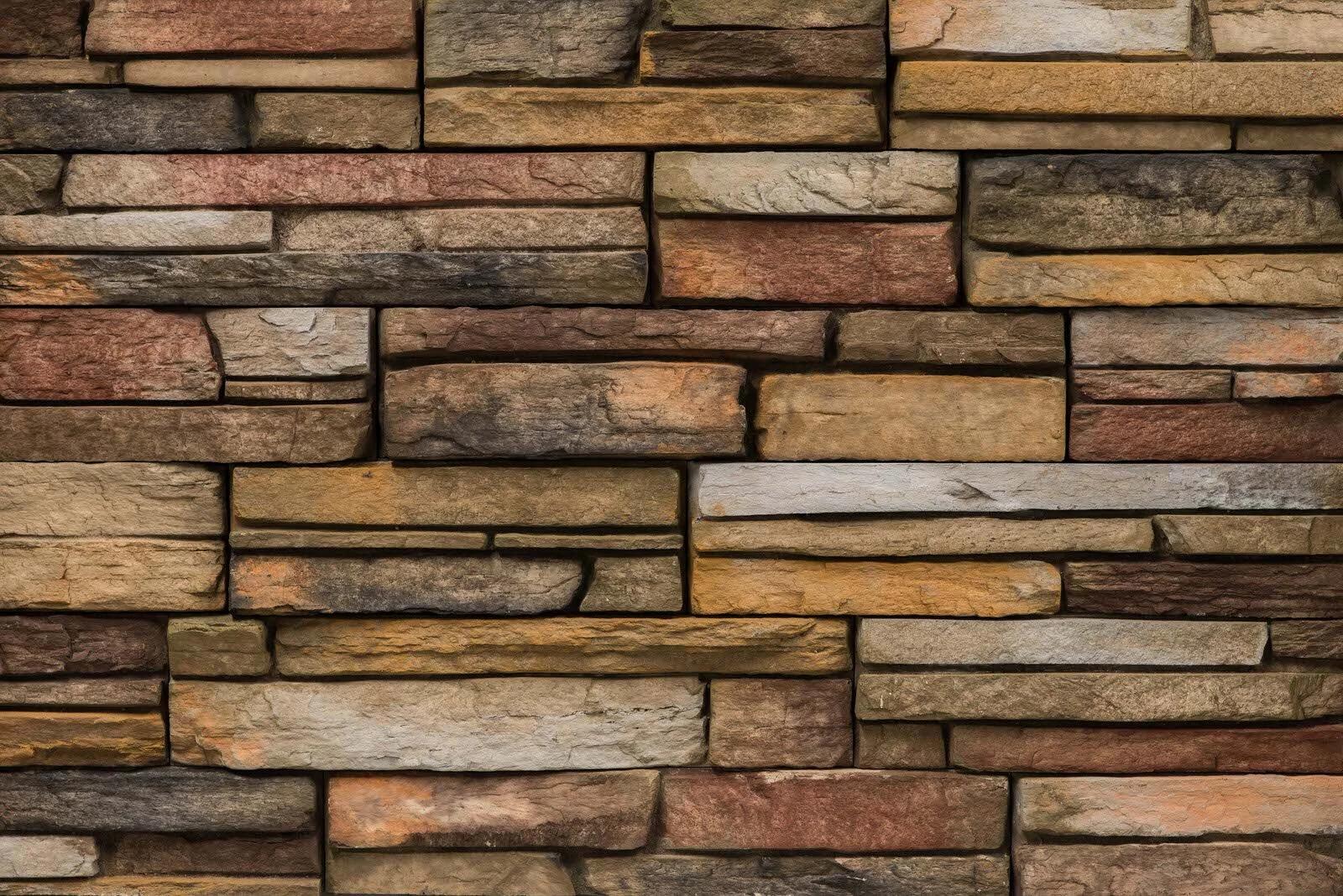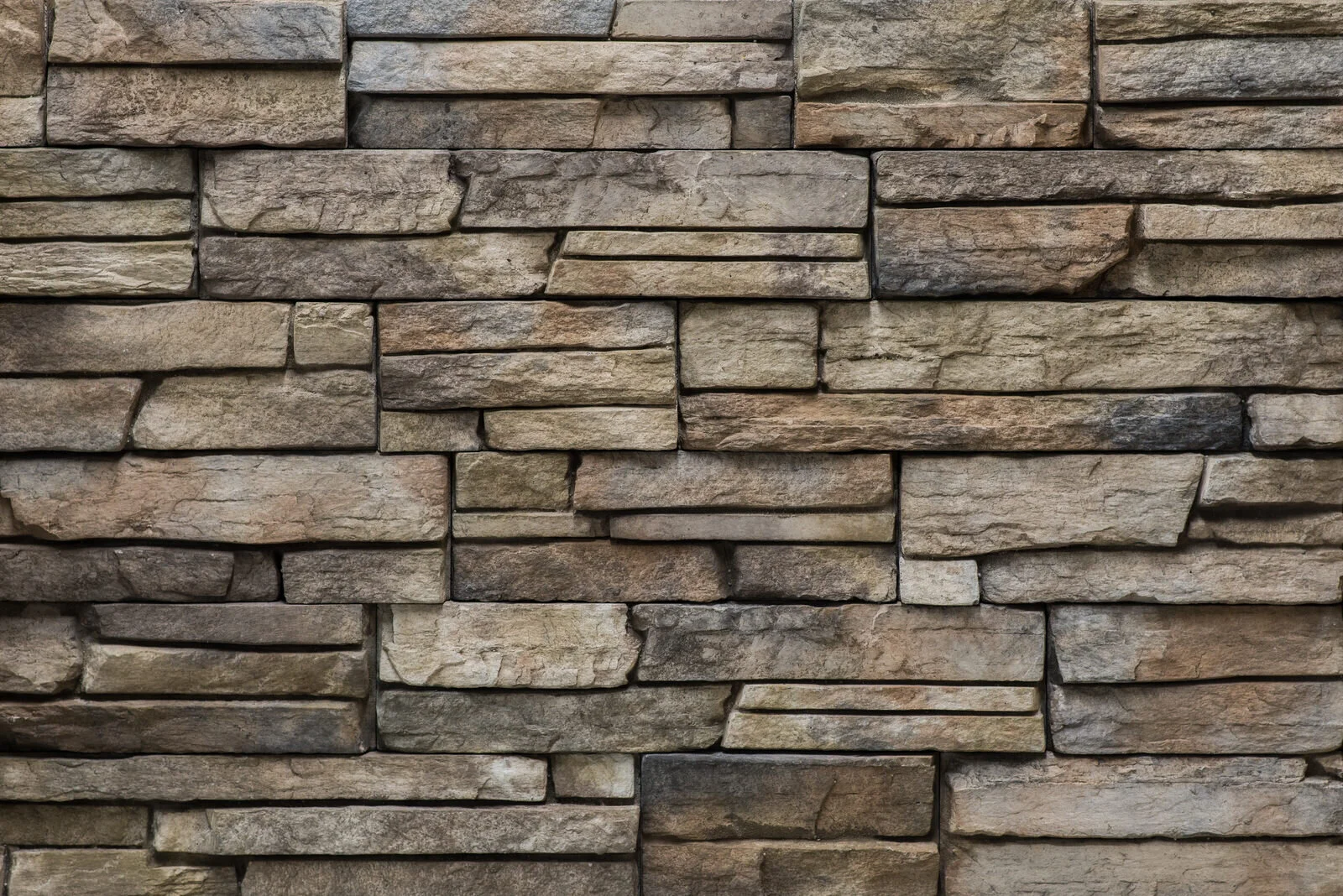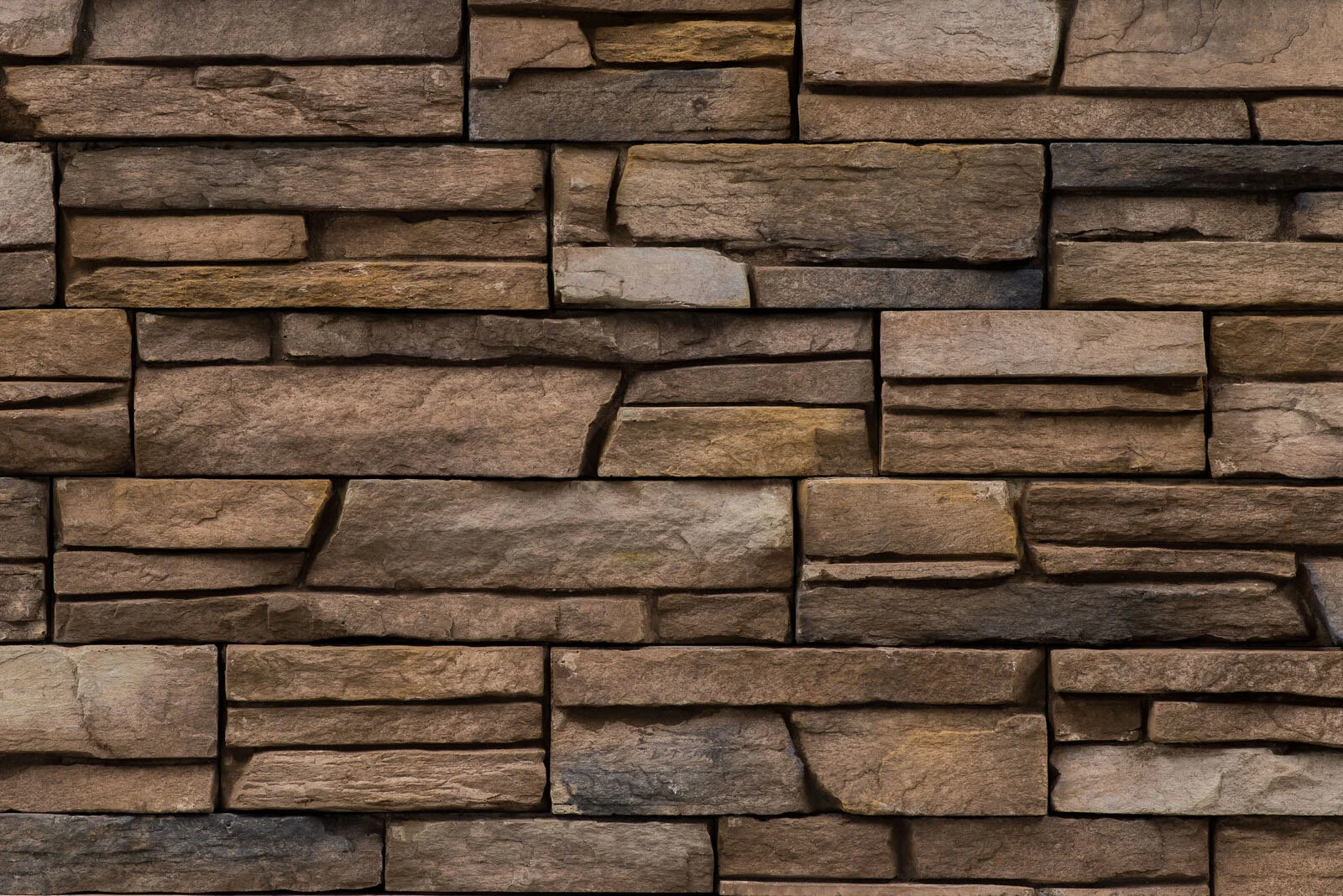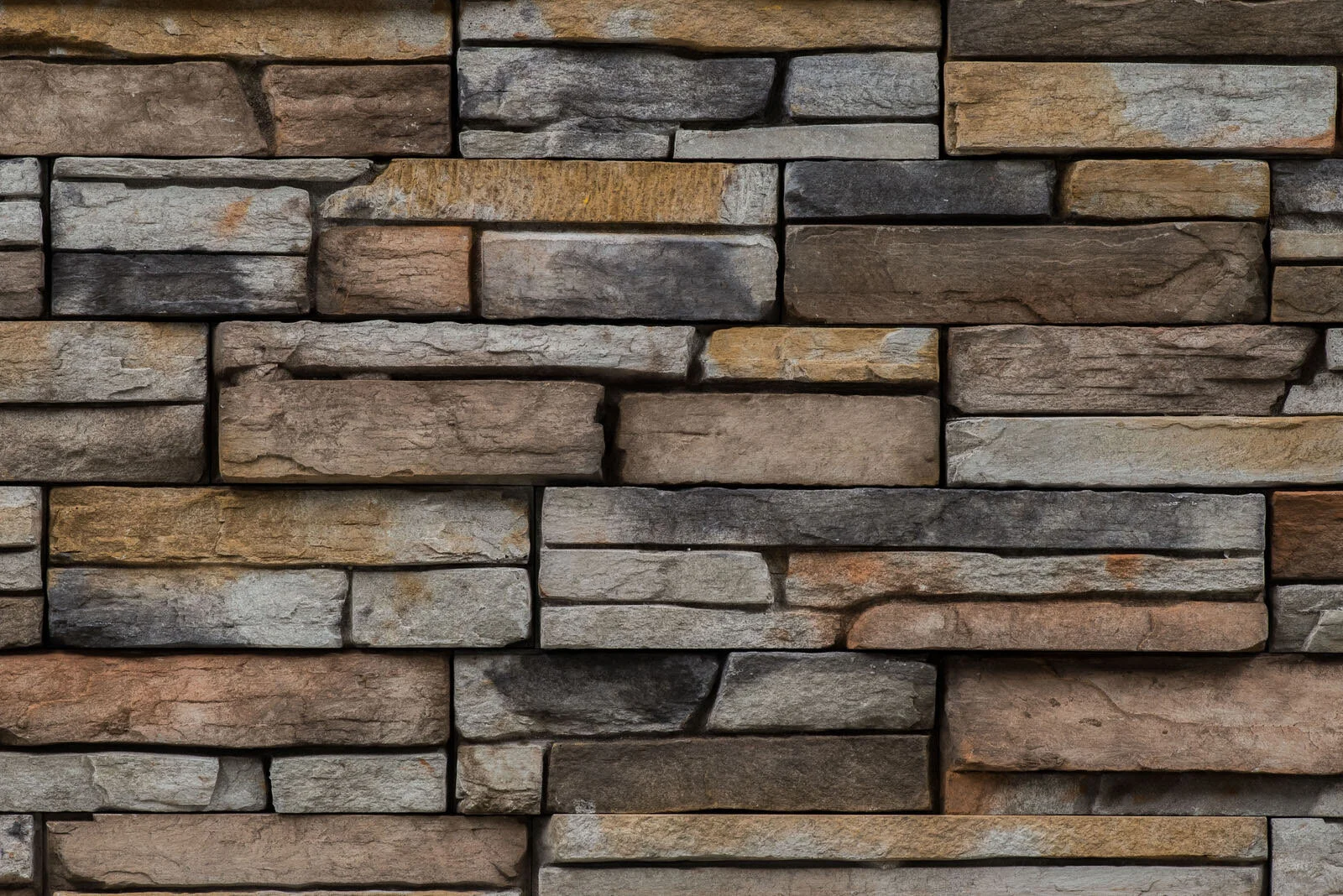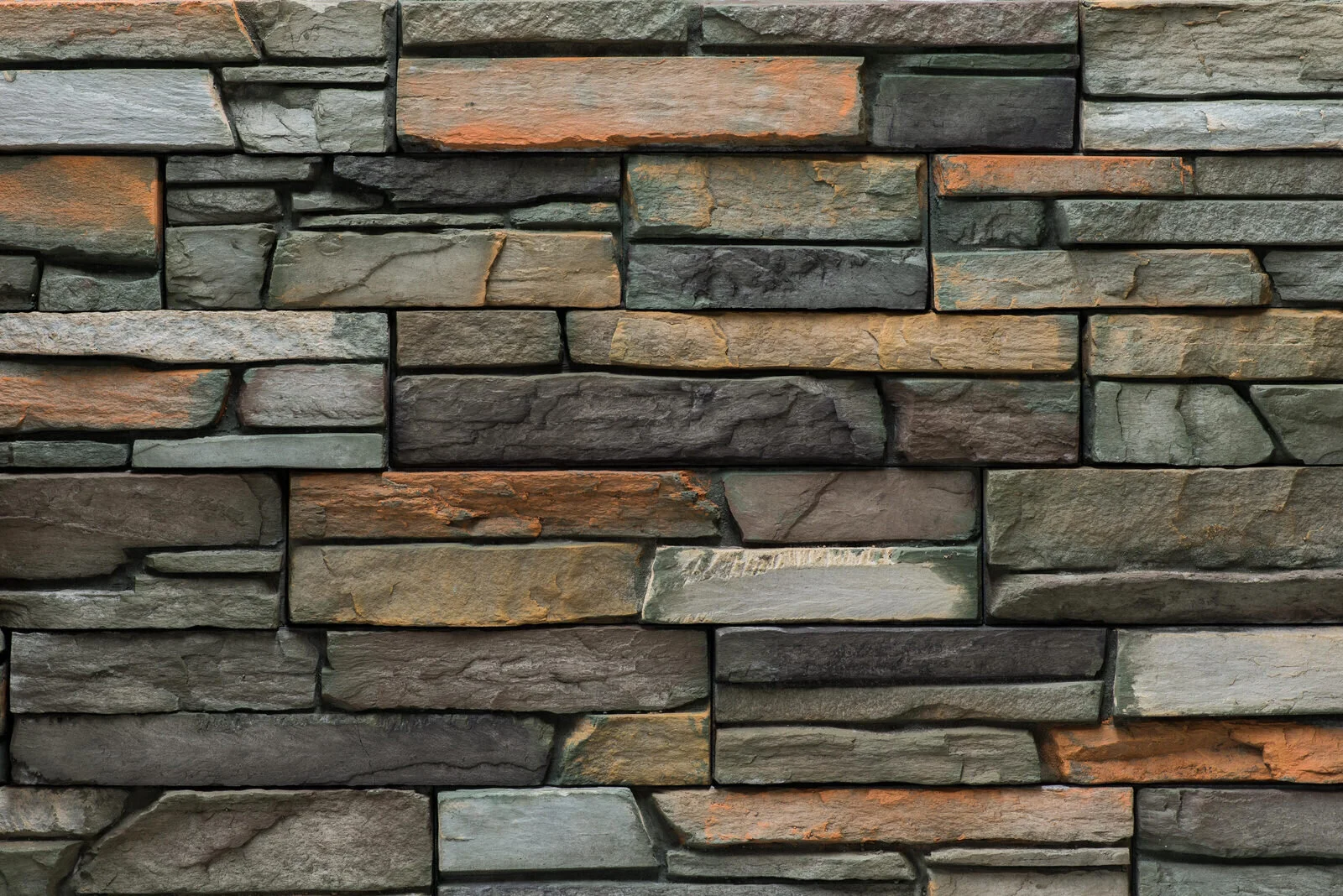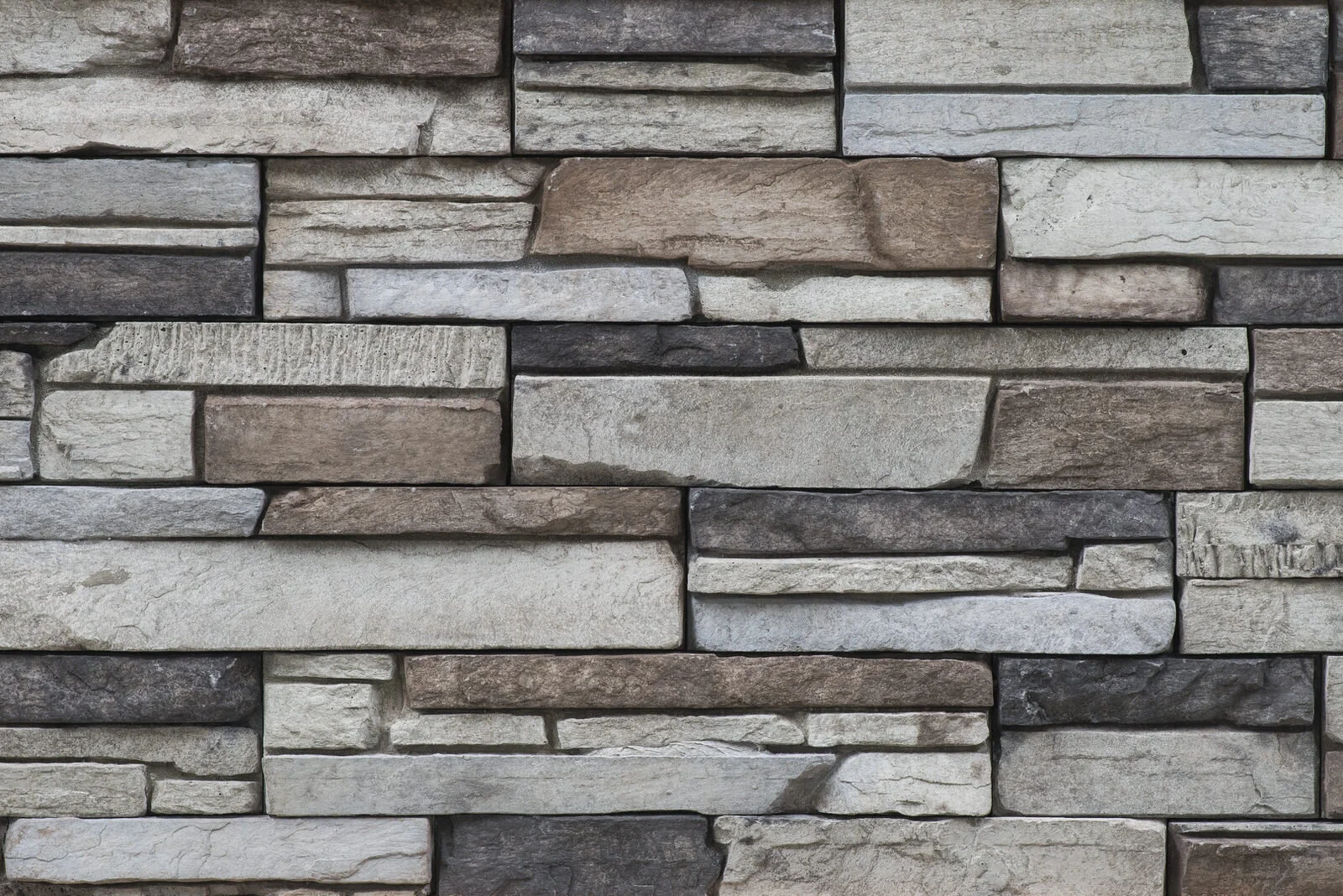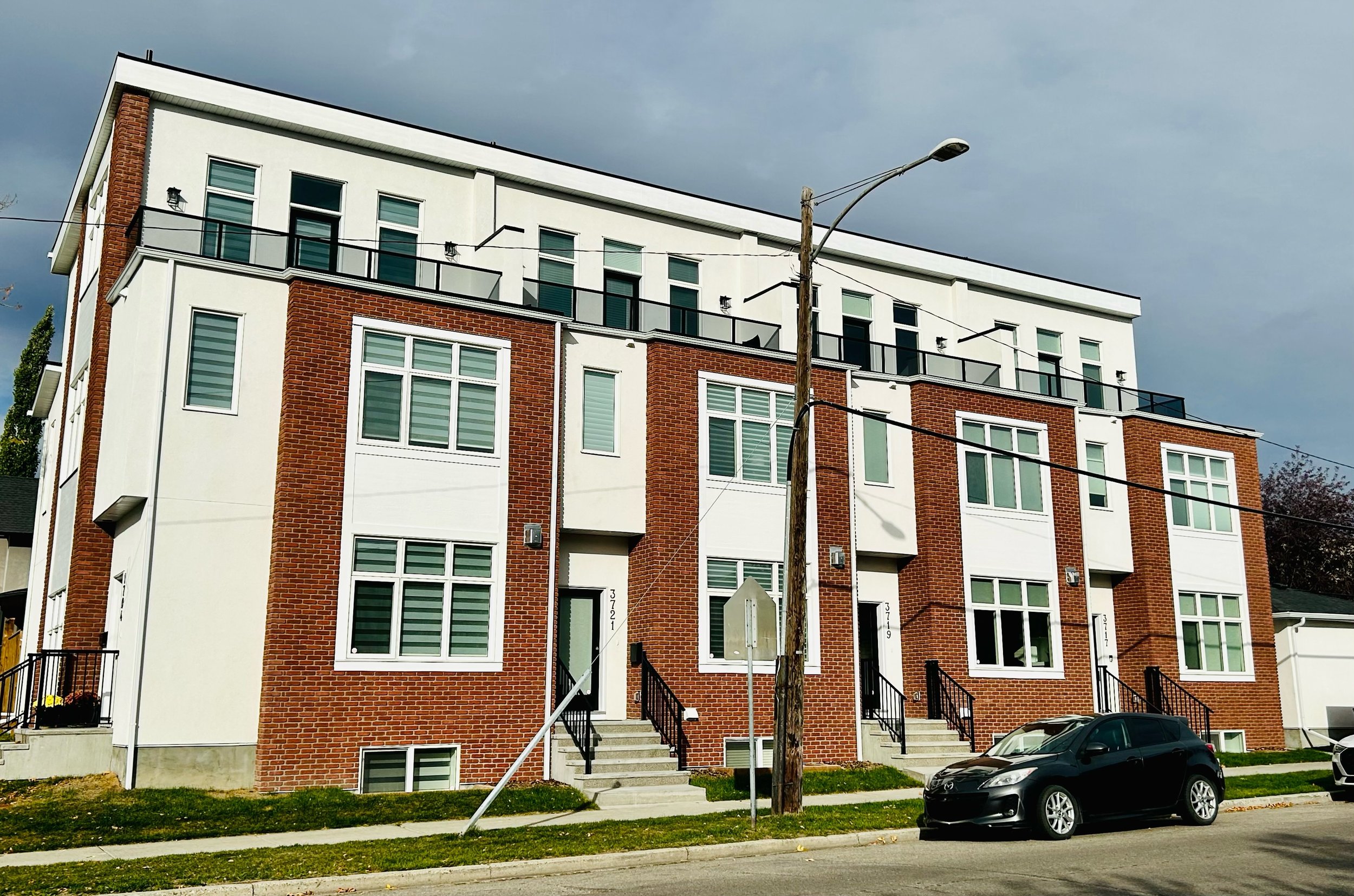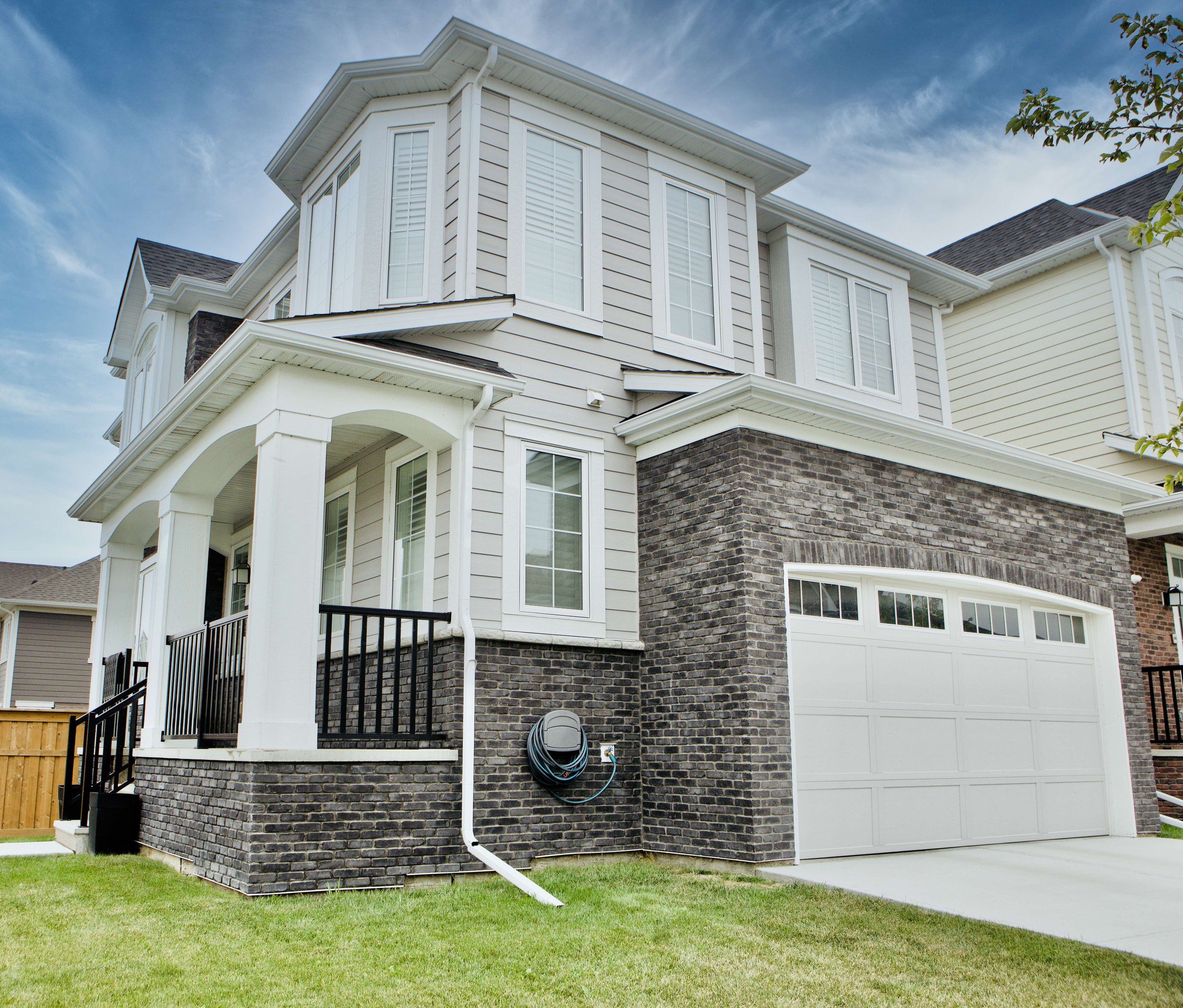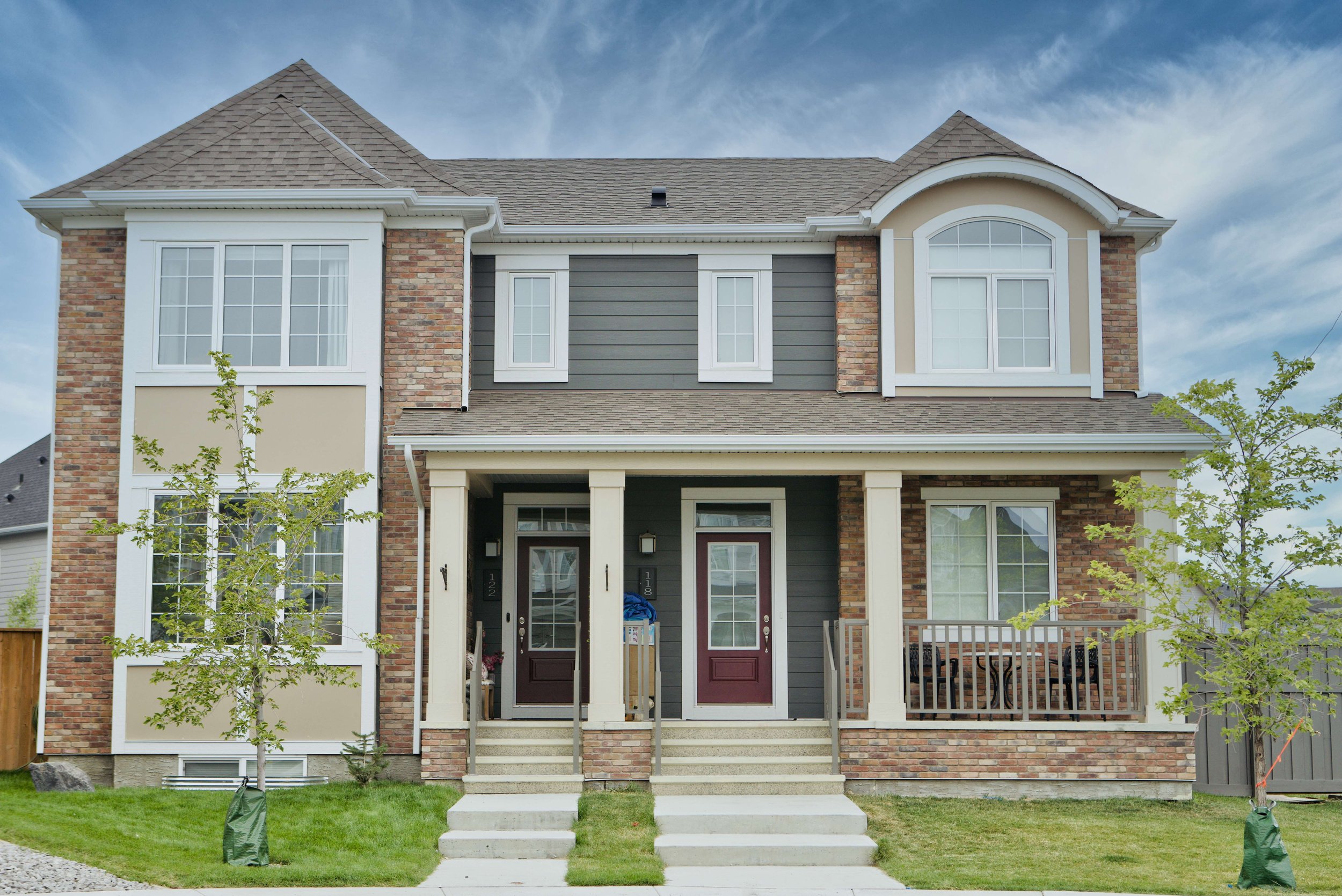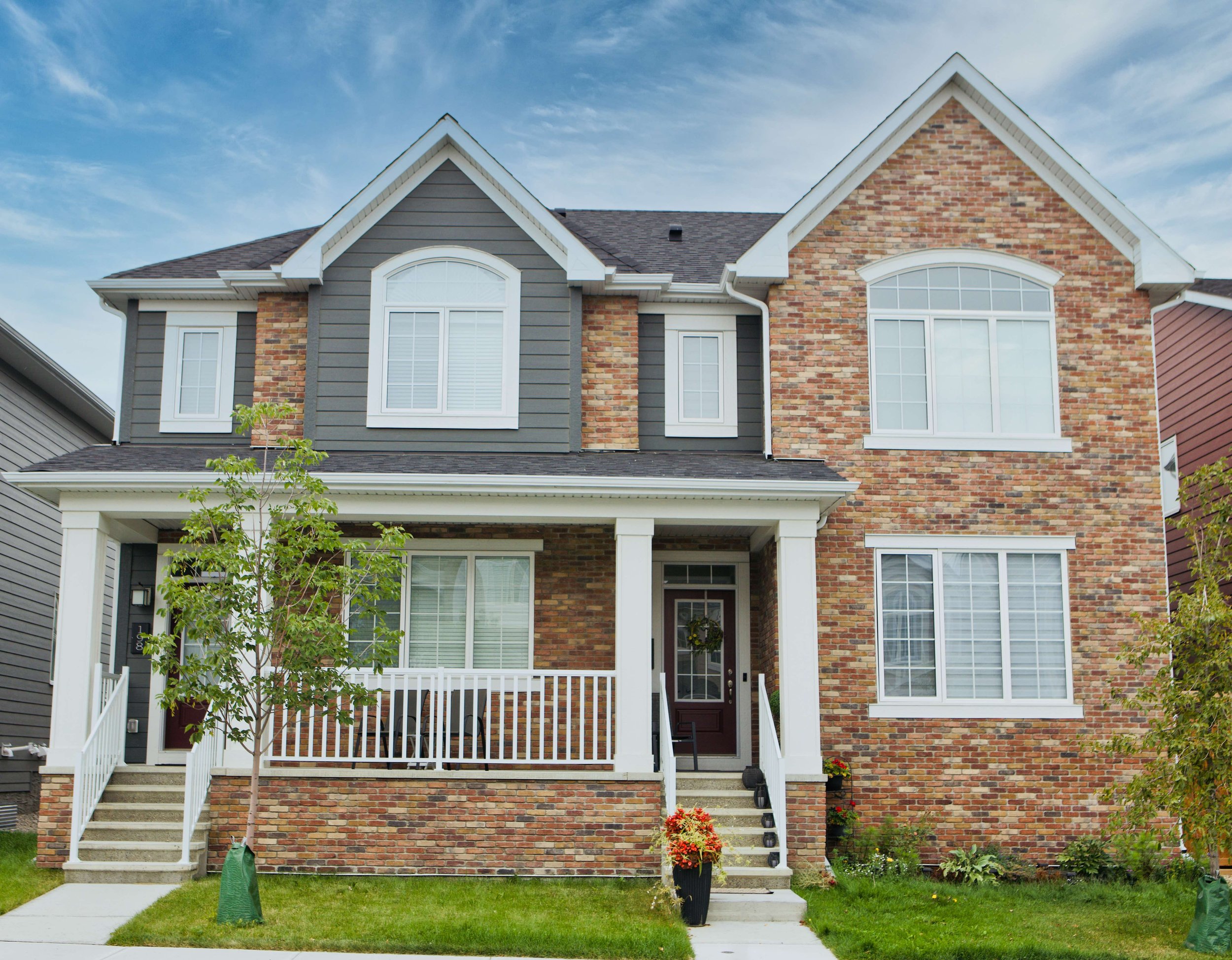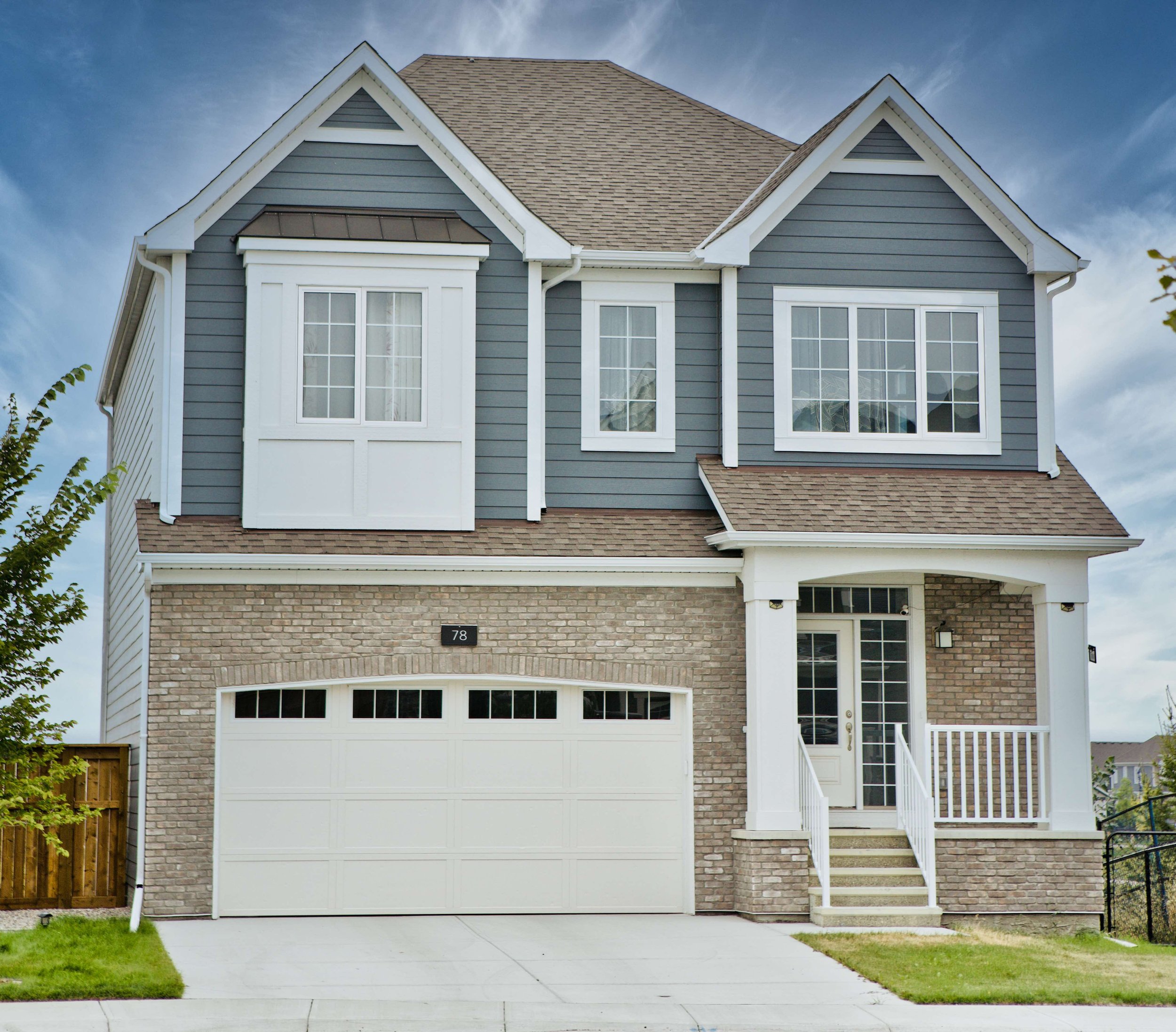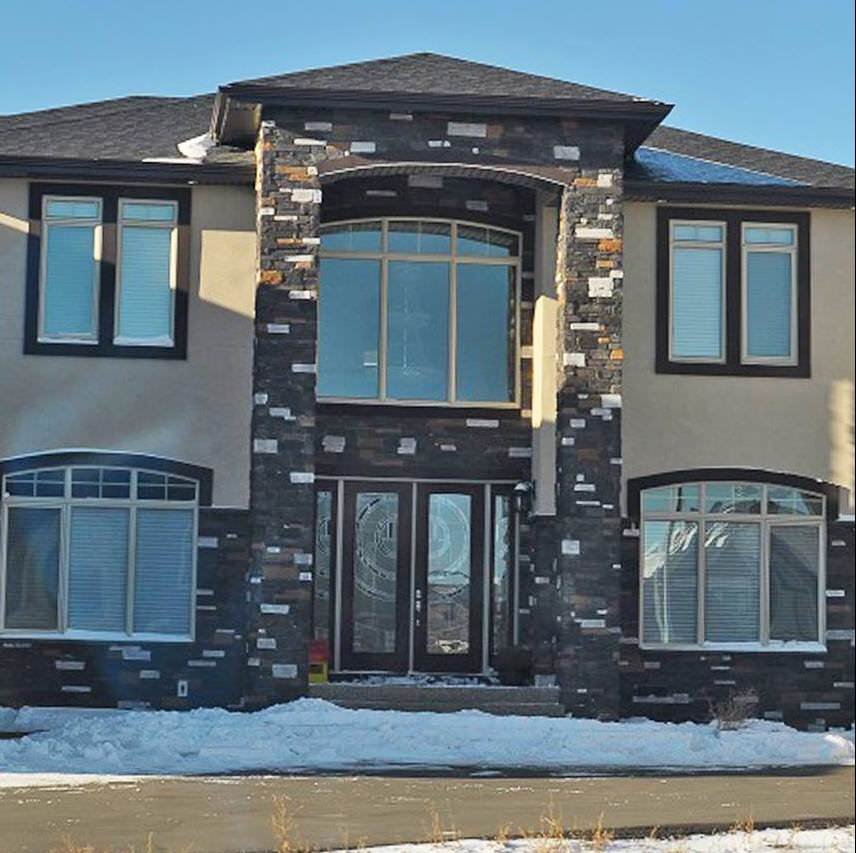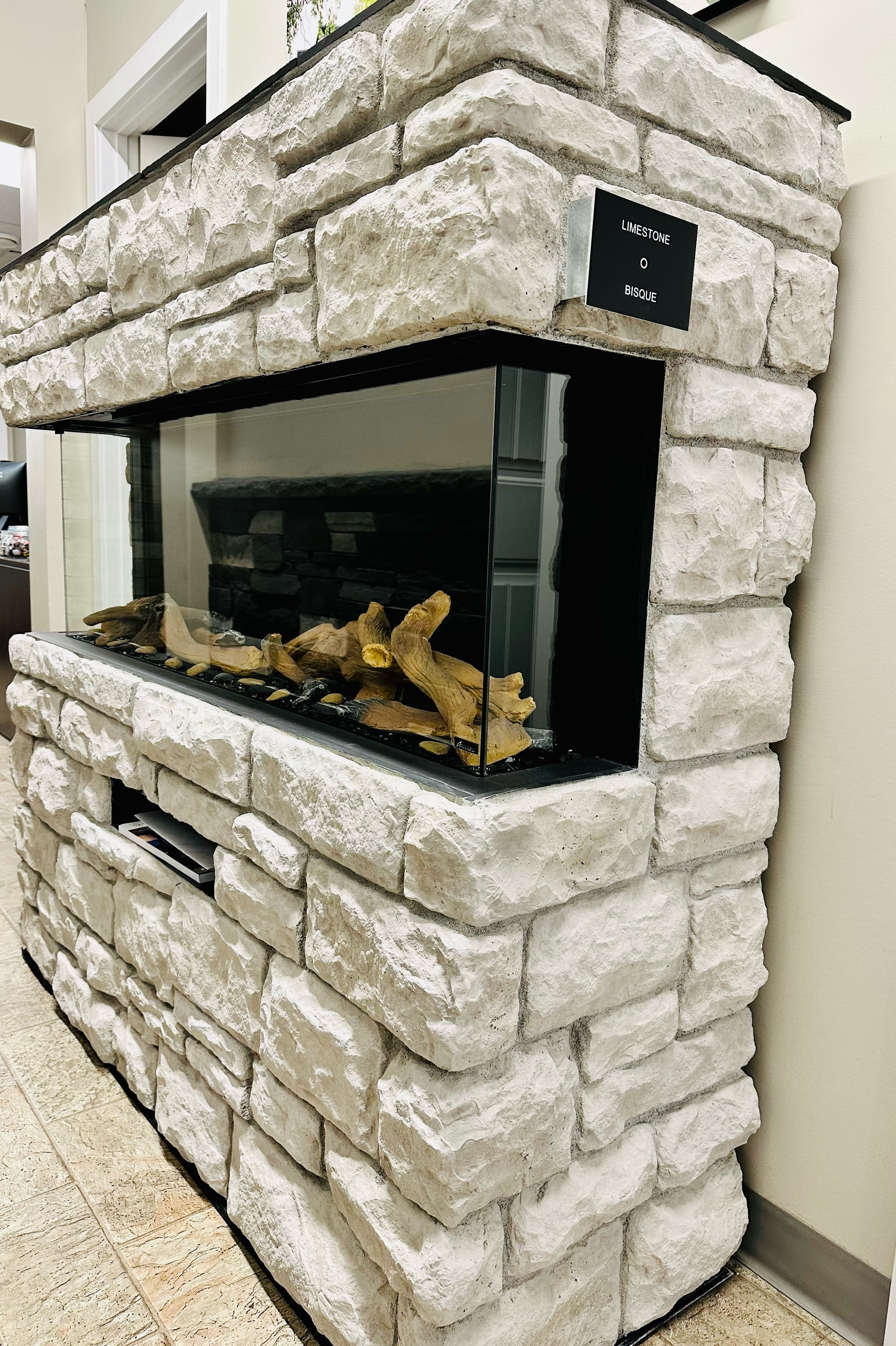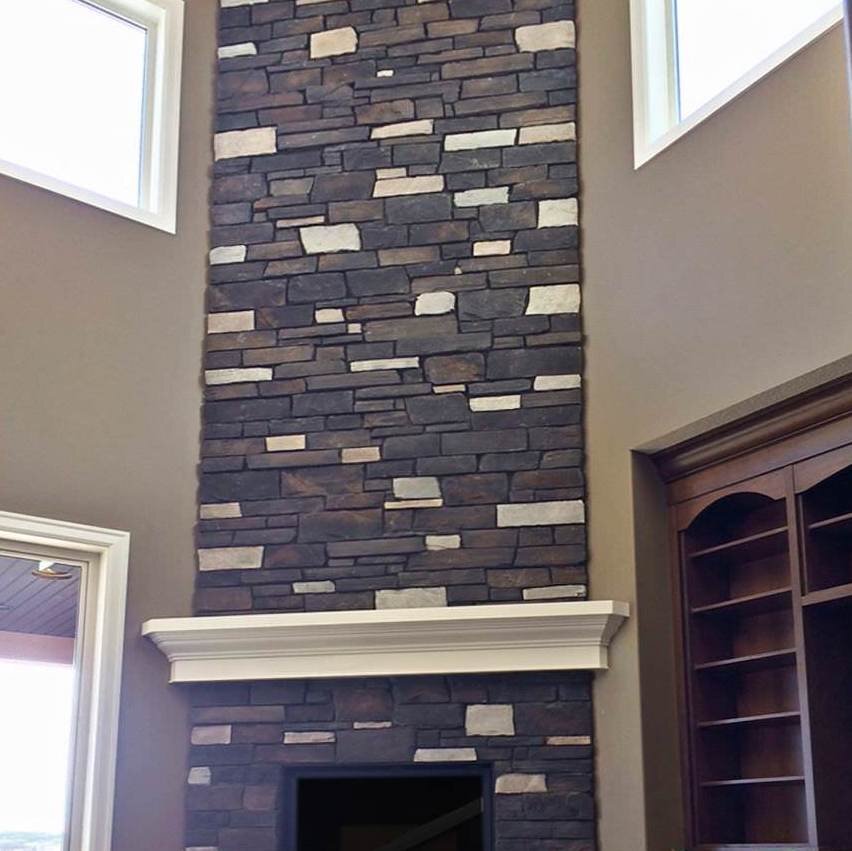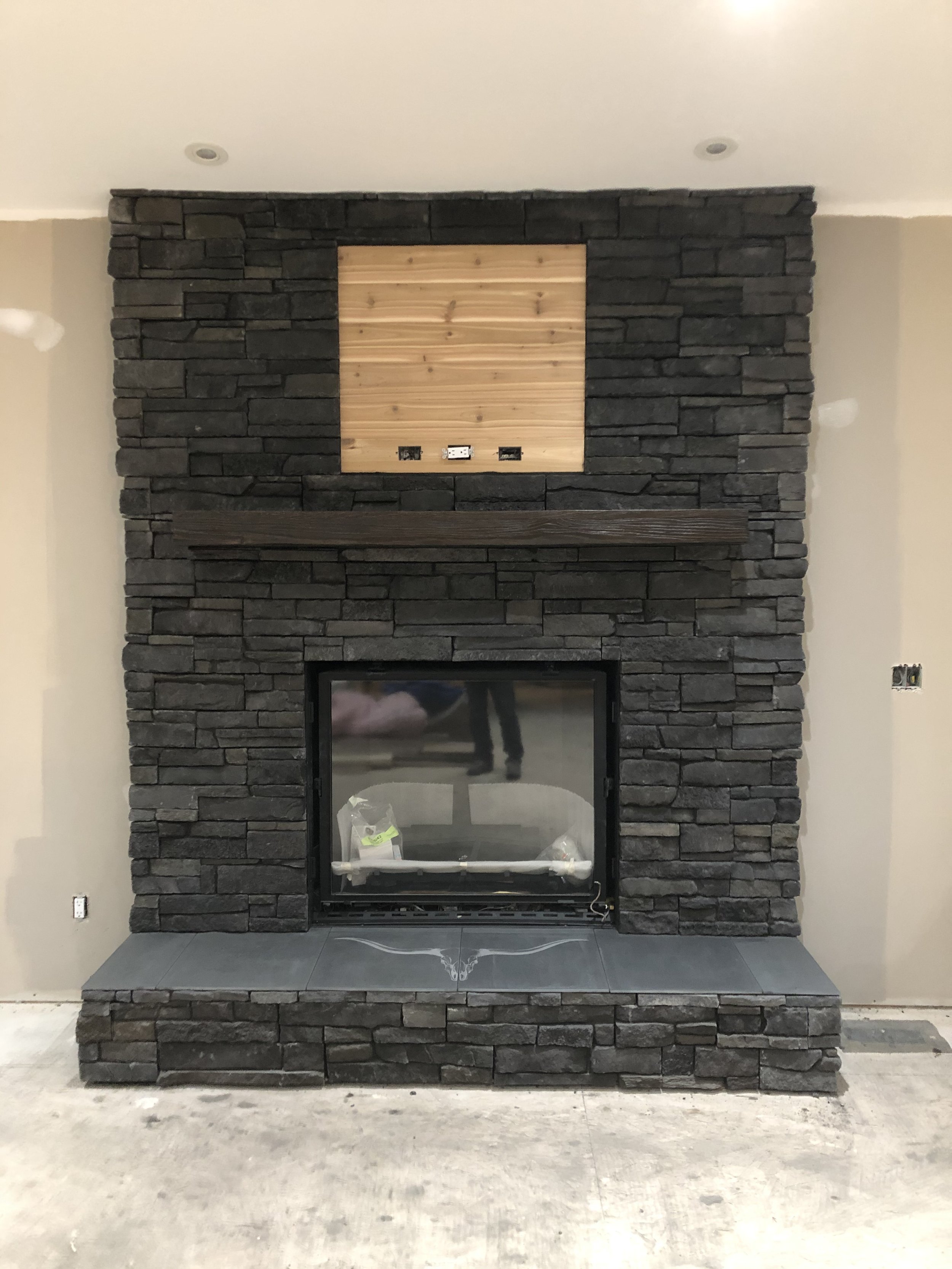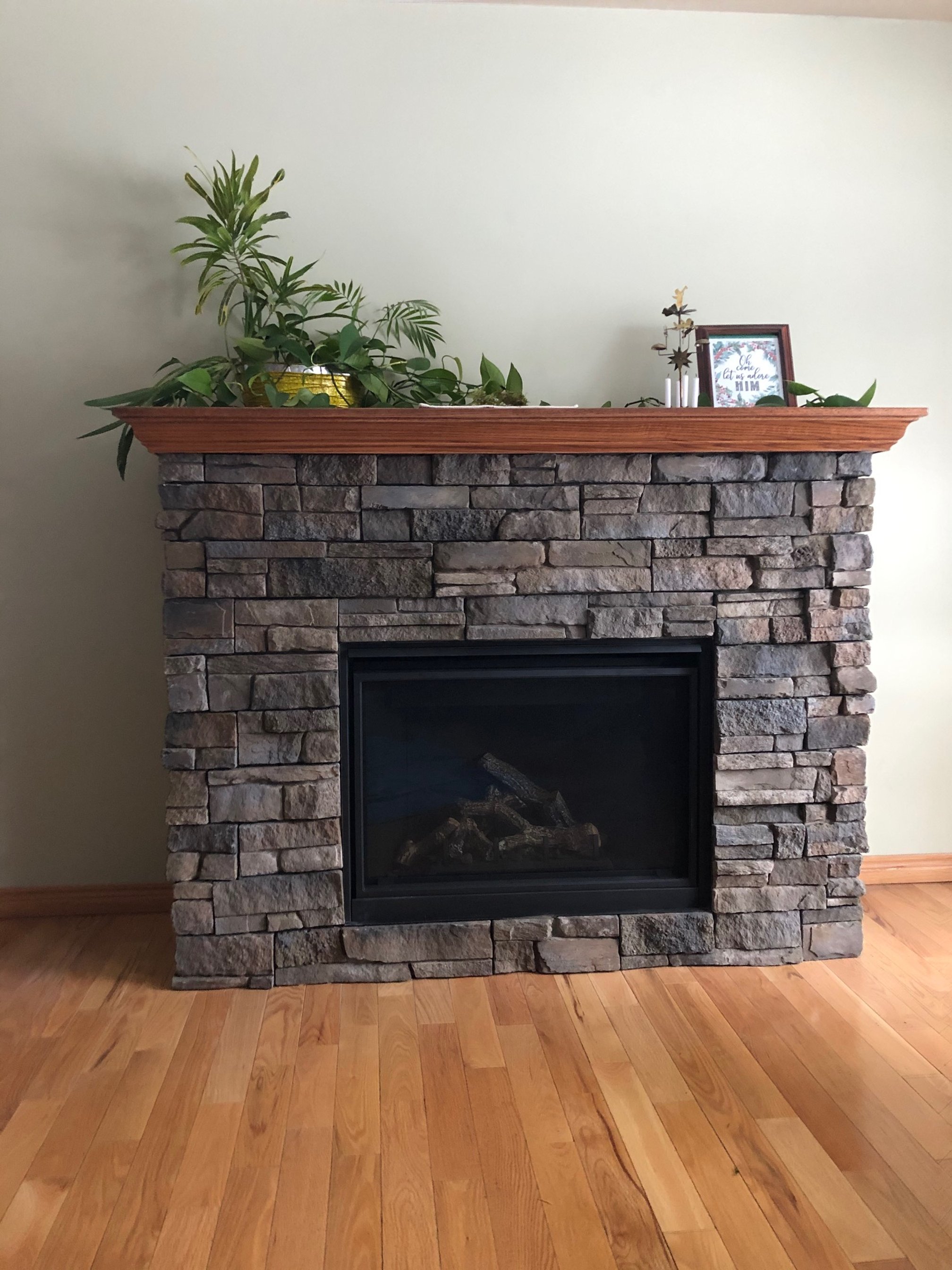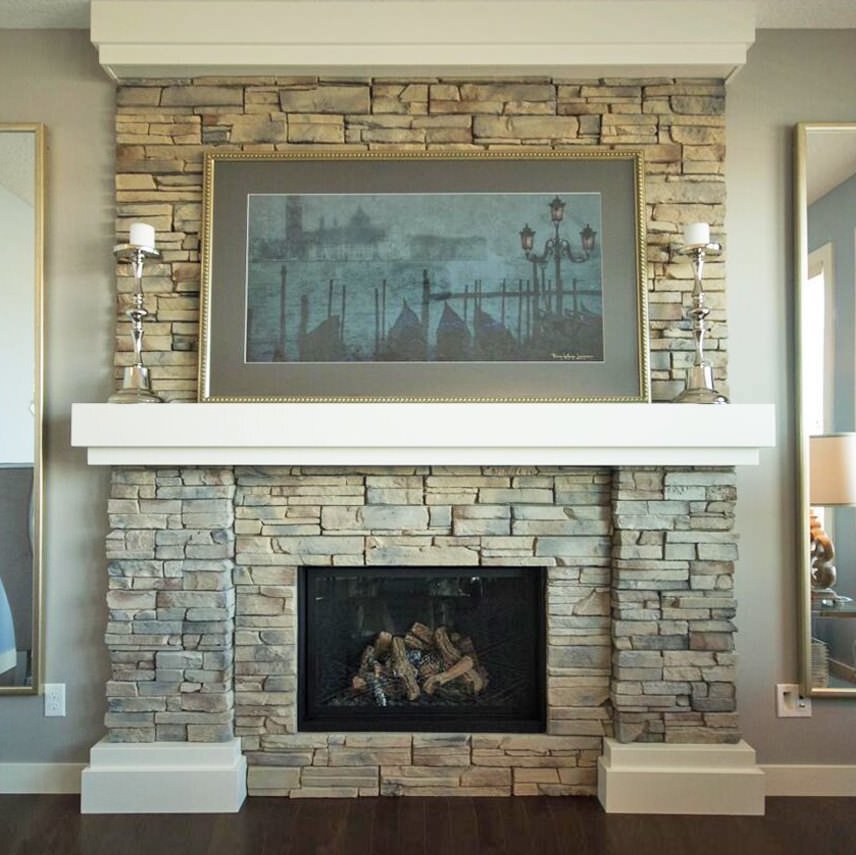Homeowners Guide to Stone Veneer
Selkirk Stone Veneer // Featured Color: Driftwood
Nothing beats the timeless look and appeal of natural stone, except perhaps its cost. Still, natural stone has many benefits that other materials just can’t beat. Luckily, that’s where stone veneer comes into play as a perfect, cost-effective alternative. You still get the look, value, and even feel of natural stone but at an affordable option.
Before getting into those benefits, however, it’s necessary to ask, what is stone veneer?
// Stone veneer //
For starters, stone veneer is manufactured and not quarried like natural stone–despite its realistic appearance. Instead, it is a combination of cement, aggregates, and pigments. The cement adds strength and stability, while the aggregates lighten the material making it easy to handle and install. The pigmentation is what colours the stone to mimic the look of real stone. Even up close, stone veneer is incredibly hard to tell apart from natural stone.
As a term, veneer refers to a secondary layer, typically decorative, that is applied to an existing surface. Stone veneer then refers to giving the appearance that a surface is made entirely from stone. An interior use, for example, is popularly applied around fireplaces for a striking feature look. Exterior stone veneer is often used on columns in a way that adds elegance and boosts curb appeal.
// stone veneer vs. natural stone //
As its name suggests, natural stone is made entirely from quarried stone with no added pigments or aggregates. The varieties in colour, shape, and appearance are the result of each different type of stone. Some of the most popular types include granite, limestone, marble, and travertine. Natural stone can also be carved into different shapes for an even more customized finish. Unlike stone veneers, which is easy to DIY, natural stone needs a masonry contractor to install.
The cost and different ways to use natural stone are the two main differences between it and stone veneer. Natural stone is much heavier to handle, must be transported once quarried, and then professionally installed, making it overall more expensive. The way that natural stone can be used can offer more variety than stone veneer. Thanks to the strength and durability of natural stone, it can be used as a building material, siding, and flooring. Stone veneer is first and foremost a decorative addition and isn’t as strong, so it can’t be used to build or be used for floors.
// stone veneer vs. faux stone //
Faux stone is the term typically used when referring to the interior use of stone veneer. While the terms are used interchangeably, there are differences between the two. The biggest difference is that faux stone is made from lightweight foam. Despite being foam, though, some faux stone panels have a high fire rating, meaning they can be installed around fireplaces. The panels typically come in 2-foot by 4-foot dimensions that are easy to cut and light enough for DIYers to handle. Installation is also just as easy since faux stone uses glue instead of mortar or grout. The downside, however, is faux stone is less durable against impact damage. Since it can be more easily damaged, it does have a lower lifespan compared to stone veneer. On closer inspection as well, faux stone doesn’t look as realistic as natural stone.
// where can stone veneer be used? //
The great thing about stone veneer is that it can be used in any room and on most surfaces, including metal, wood, and cement. No matter where you choose to install it, stone veneer is always available in various colours, styles, and custom shapes.
// exterior stone veneer //
Exterior application is a highly popular choice for stone veneer, especially when homeowners want to boost curb appeal. Here are a few different ideas and ways to use exterior stone veneer:
Trim: this is a great way to highlight specific features on your home and still change the overall appearance. Stone veneer around a front door will instantly make it an eye-catching feature entrance. Windows will likewise benefit from a stone trim that will make them pop against the siding. Even veneer applied to the base of a home’s foundation can add elegance and the illusion of height.
Façades: The façade is the part of the house that faces outwards and is most likely to be noticed by passersby. Adding a touch of stone veneer to a façade will add both attention-grabbing curb appeal and a timeless aesthetic.
Backyard grill: Veneer can also be applied in other exterior uses aside from directly on the home. Backyard grills or outdoor kitchens will look stunning with a stone veneer wrap. As a bonus, it’ll also help protect the walls from any splatters or damage!
// interior stone veneer //
On the inside, the stone veneer has just as many attractive and value-boosting uses. While the exterior has a focus on curb appeal, the interior is all about design and highlighting features. Thanks to the versatile and customizable nature of stone veneer, there is little limitation to its uses:
Accent walls: Any room, from the bathroom, kitchen, or living room, will benefit from an accent wall. In the kitchen, install the veneer behind the stove and range hood for an eye-catching backsplash. Bathrooms or bedrooms will either feel cozier or gain the illusion of more space depending on the style and colour.
Kitchen island: Another great way to incorporate stone veneer is to pick a feature in your kitchen and further enhance it. In this case, a kitchen island is a perfect pick. The look of stone will add warmth to the space and create a custom look that will add great value.
Fireplace wrap: You can’t go wrong adding stone veneer to a fireplace as its one of the most classic looks. It instantly transforms the look into an eye-catching and luxurious centrepiece.
// appearance //
Despite stone veneer being mass-produced, there are ways to give it a unique touch. One way, for example, is to change the appearance of the stone veneer by choosing a more natural design. Depending on where you apply the stone veneer, a different appearance or design may be more beneficial to compliment the space.
Classic: resembles the cut and shape of natural quarried stone. The uneven edges, curves, and slopes make it a great choice around fireplaces or as accents for outdoor kitchens.
Cubic: The rough-cut square shape is another popular choice. The final look is easily customizable with different shapes and colour variation between each piece.
Rectangle: This lends a cleaner and more simplistic appearance that is especially popular for feature walls or backsplash in bathrooms or kitchens.
Mosaic: is a great way to blend different colours or types of stone veneers for a unique finish. The final look is much bolder, so an eye-catching column wrap or a façade siding is a perfect use.
Natural: uses the mortar installation to create a more natural and traditional look. The thicker the layers of mortar between each stone, the rougher and more rustic the final appearance.
// INSTALLATION //
Interior vs exterior stone veneer installation involves different processes with varying steps. The main difference in an exterior installation is the extra steps required to waterproof the surface beneath the veneer. The surface must also be code compliant, have no damage, and the surface must be clean before installing the veneer. Two layers of protective water barriers must be installed, followed by a weep screed that lets moisture escape.
Then, a scratch is applied to help the mortar or adhesive glue bond to the veneer. It also serves to further prevent air or water from getting in and protects the surface of the house from weather damage. Then, the mortar and veneer can be applied, followed by a layer of grout. The dry stack method will omit the final mortar and grout layer. With all these steps, it can be overwhelming for a first DIYer to handle. That’s why exterior stone veneer installation is generally best left to the professionals to ensure a safe and quality finish.
With interior stone veneer, the focus is on appearance and style. There is less risk of weather damage or fading over the years from sunlight and wear. That also makes interior installation a much easier DIY project, as the waterproofing steps can be omitted.
// DIY OR PRO? //
Stone veneer is generally an easy material to install, but there are times when a professional’s help is best. Interior stone is an example where DIY is possible, especially if you use faux stone. Still, the right tools and some masonry skills are necessary to ensure that each layer is level and that enough adhesive is applied. Exterior installation, however, should generally be left to a professional. There are many more steps and skills involved, especially to prevent moisture or water from causing damage. A professional will also have the necessary tools and help remove any stress from handling the work yourself. If you are adding stone veneer to boost curb appeal or just want to ensure quality, hire a pro. Investing in a professional is never the wrong choice. It will always be worthwhile, much like choosing a stone veneer!
// how WE CAN HELP you! //
We take pride in our services as a reliable manufactured stone supplier, and we know that when you work with us, you can look forward to impeccable quality. Our capable team of professionals can help all of our customers with a consultation to find the right stone veneer for their home.


